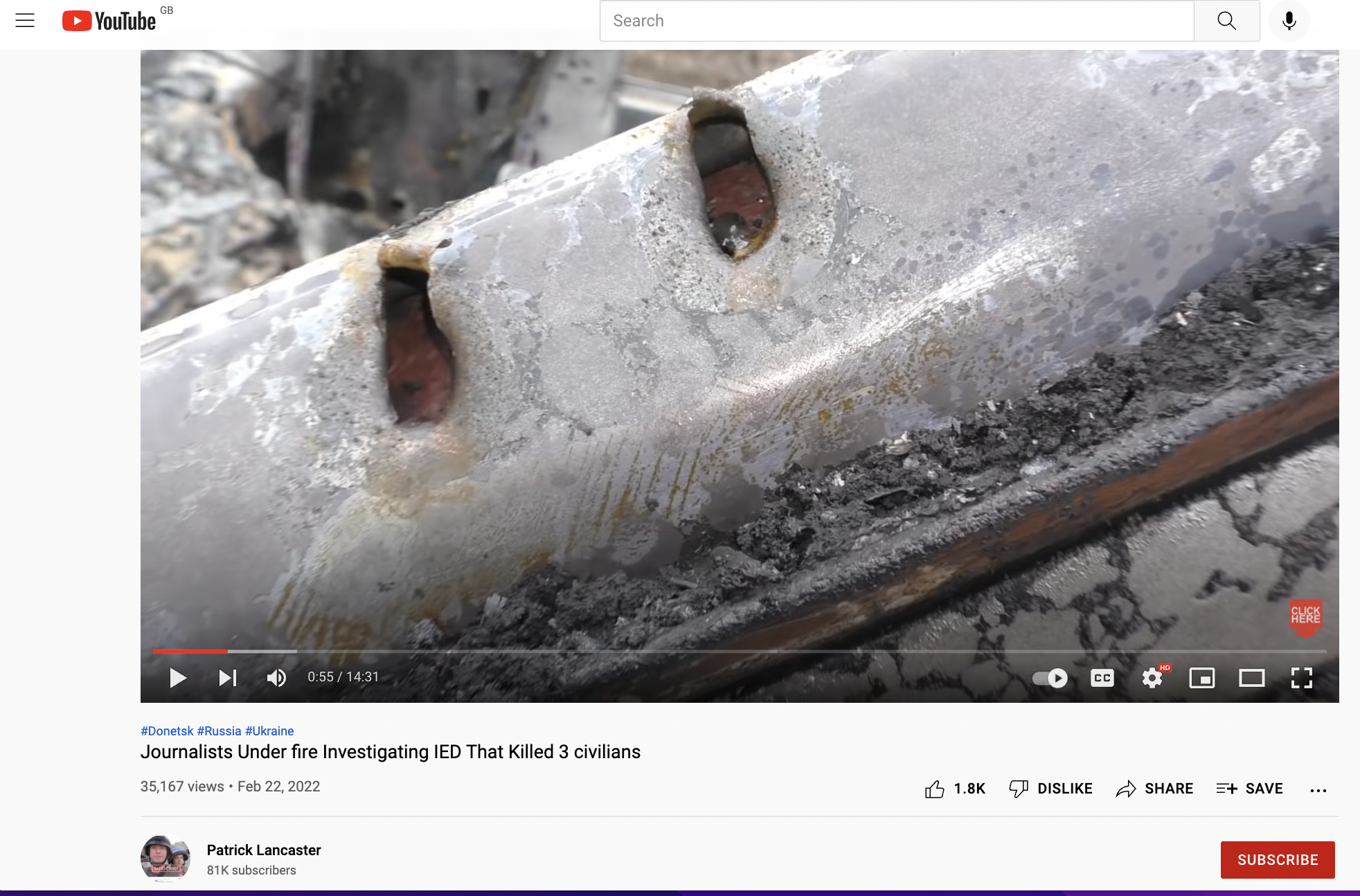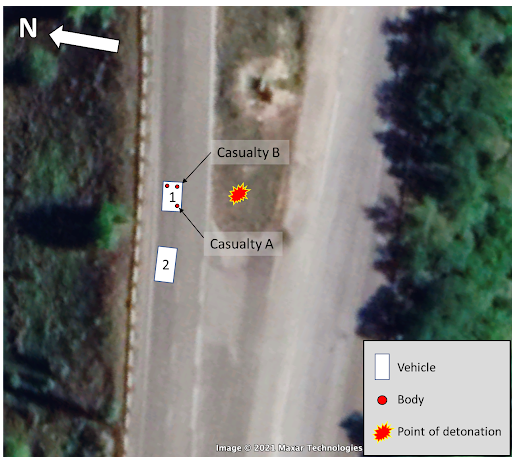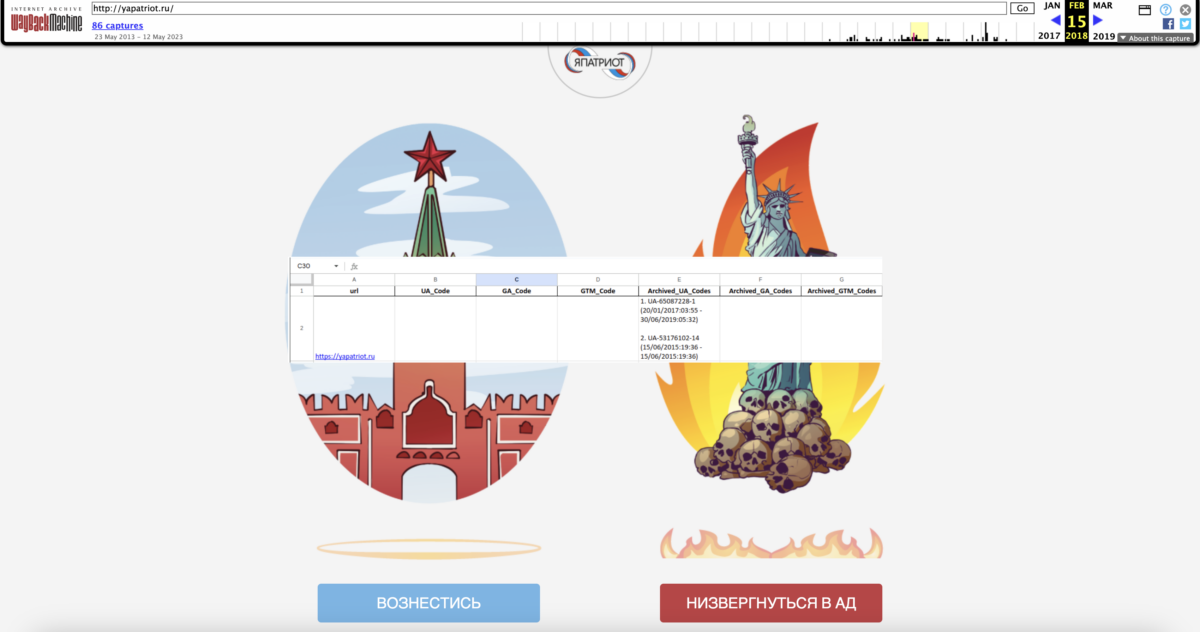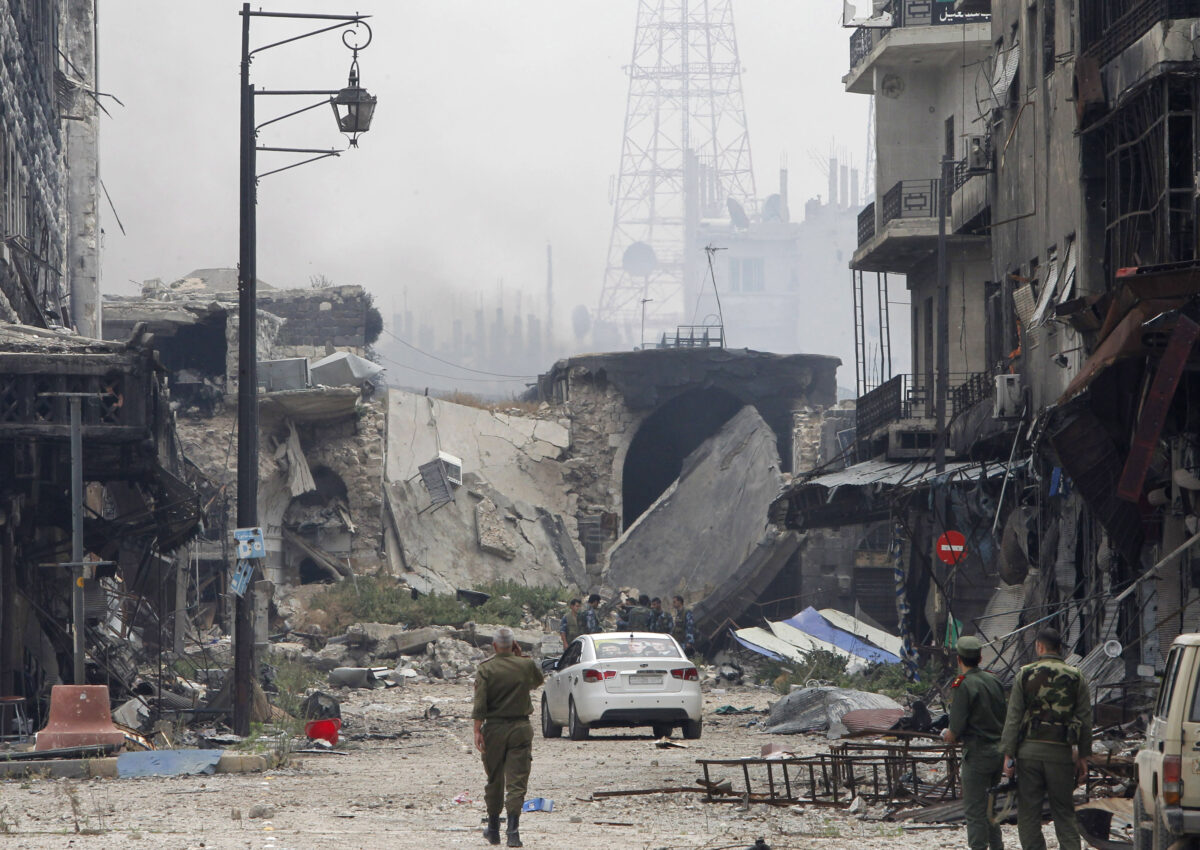‘Exploiting Cadavers ’and ‘Faked IEDs’: Experts Debunk Staged Pre-War ‘Provocation’ in the Donbas
Editor’s note: This article contains and links to imagery which some readers may find disturbing
With Russia’s invasion of Ukraine ongoing, it’s easy to forget the flurry of dubious provocations and staged events that appear to have been designed to implicate the Ukrainian armed forces and drum up military aggression in the days before the first shots were fired.
These included videos showing alleged border incursions by the Ukrainian military and footage of purported saboteurs attempting to blow up a chlorine facility at a sewage treatment plant – both of which showed nothing of the sort.
But one suspicious video, which showed a gruesome scene of charred bodies and human skulls that seemed to have been sliced open, appeared so serious and egregious that Bellingcat decided to investigate further, speaking to an explosive weapons expert and a forensic pathologist in the process.
What they told us was that an apparent IED (improvised explosive device) attack used by separatist and Russian media as evidence of Ukraine’s aggression included the staged use of cadavers and likely faked IED damage.
The incident in question took place on a highway between Donetsk and Horlivka in separatist-held Ukraine on 22 February, 2022 at approximately 0500 AM (local time). An IED was reported to have detonated on the highway, impacting two vehicles – a van and a car.
According to the spokesman of the Ministry of Defence of the ‘Donetsk People’s Republic’ Eduard Basurin, three people were reported to have been killed in this incident. The ‘DNR’ People’s Militia posted images of the scene on its official Telegram channel. Pro-Kremlin media from Russian and separatist outlets, including the Russian daily newspaper Izvestiya and US blogger Patrick Lancaster, filmed the scene that morning. Their correspondents surveyed the two vehicles, as well as the point of detonation of the reported IED, claiming that the target of the attack was a ‘DNR’ military commander travelling in the van.
That morning, news reports of the incident appeared on the websites of Russia’s government newspaper Rossiyskaya Gazeta, RT’s Russian-language service and Gazeta.RU. The head of Russia’s Investigative Committee Alexander Bastrykin then ordered an official investigation into the event.
#DPR claims there was a "terrorist attack" at the #Donetsk – Gorlovka highway with three people killedpic.twitter.com/MyD6vnCVip
— marqs (@MarQs__) February 22, 2022
From those reports it’s possible to identify the exact location, as well as put together a rough sketch of the scene.
The car, marked as Vehicle 1 above, appears to have borne the brunt of the blast from the apparent IED and contains the bodies of the three people who were reportedly killed.

A screen grab of Vehicle 1 from a video posted on Twitter (originally posted by “Reporter Rudenko V” on Telegram and reported by Vashi Novosti) from the scene of the alleged attack.
Various other details of this attack have been noted as suspicious by online observers — such as the lack of number plates on both vehicles or the fact that neither vehicle appeared to have moved from the point of detonation, suggesting they were both static when the IED detonated. These details are odd by themselves, but are not absolutely conclusive.
However, two particular details raise serious questions about the very fact of this attack: namely damage caused by the IED and the injuries inflicted on the alleged casualties.
Experts approached by Bellingcat cast doubt on whether the damage seen on the vehicle was consistent with an IED blast.
“This incident has been manufactured to give the impression it was a result of the detonation of an IED or off-road bomb’” said Chris Cobb-Smith, an explosive weapons expert and director of Chiron Resources.
He continued: “The damage on the left side of the car does not resemble fragmentation indentations from a blast, the puncture marks are too uniform and there is no evidence of buckling or indentation on the panels that would occur from a blast. The indentations visible look very much like bullet holes. If the car had been moving at the time of the blast it is doubtful that it would have come to an immediate stop, as appears here, momentum would have at least carried it on some metres and probably not in a straight line”.

Example of penetration holes in the side of Vehicle 1. Screenshot from video by Patrick Lancaster. Bellingcat has not embedded the full footage due to graphic nature of the content.
Cobb-Smith also noted that the second vehicle did not appear to have suffered any fragmentation damage at all, given that its rear tyre was not punctured and the damaged window seemed to have been blown out in the wrong direction — towards the blast.
“In my opinion the images do not represent credible scenario, I believe the incident has been
manufactured to give the appearance of an IED blast in which three individuals died. I believe the vehicle was the subject of short-range small arms fire, it was not moving at the time and the victims were planted postmortem”, said Cobb-Smith.
Unusual Injuries
The injuries caused to the three alleged fatalities immediately aroused suspicion after graphic footage depicting their charred state emerged. In a detail first noticed by the Twitter account @glastnostgone and reported by the independent US media website Grid News, one of the bodies (Casualty A) appeared to have an unusual injury for a person impacted by an IED. These injuries included what appeared to be clear cuts on both sides of the head, cleanly separating the skull cap from the rest of the skull.

Screenshot from video by Patrick Lancaster. Bellingcat has not embedded the full footage due to graphic nature of the content.
Warning Graphic Content: Images in Link Show Remains in Burned out Vehicle
https://twitter.com/PLnewstoday/status/1496070006685196294 (archived here: https://web.archive.org/web/20220228111147/https://twitter.com/PLnewstoday/status/1496070006685196294)
It was suggested by other open-source observers that these cuts were in fact consistent with a procedure carried out during an autopsy. Bellingcat approached a forensic pathologist to ascertain whether these cuts were consistent with an autopsy, or could have been caused by an IED.
Dr. Lawrence Owens Research Fellow at the University of Winchester replied, noting that the cuts were clearly from an autopsy procedure, and that, given the context, Casualty A in Vehicle 1 would have been dead before the explosion.
According to Dr. Owens, the colouring of the cut edges on the skull of Casualty A suggest that the cut was already present when the body was burned; furthermore, the warping and splitting brought about by heat exposure does not match across the cutline.
“The burning event seems to have been rather intense, yet this is not matched in the damage to the car. The remarkably neat placing of the body in the seat is also somewhat striking, as is the total lack of damage to the car’s interior even relatively close to the body”, he added.
He also examined the bodies visible in the rear seat, stating that “the remains are badly yet irregularly burned, with blackening and twisting in some areas and calcination elsewhere. The skull appears to be that of an adult male but the remains are partially obscured by soft tissue remnants.”
“Most striking is the line of truncated ribs – while one might expect damage to the thorax, the neatness and linearity of these cuts suggests that they were in fact cut using surgical shears, for the purpose of opening the thoracic cavity as part of a post mortem.”
“One would thus conclude that this is another case of exploiting human cadavers in order to fraudulently engineer a ‘crime scene’, with obvious implications for the swaying of public opinion and thus justification for the military action that is currently underway.”
Dr Owens’ conclusion that both visible bodies were already deceased before being placed in Vehicle 1 was consistent with those of another forensic pathologist Bellingcat spoke to but who wished to remain anonymous.
At Bellingcat we have been keeping track of some of the disinformation used by the Russian state and its proxies to justify its war against Ukraine. However, no other event has gone quite so far as this one, namely using bodies to try and fake an IED attack. This is a bitter irony considering the Russian state has levelled this very same accusation, with absolutely no evidence, at Syrian victims of chemical attacks.



